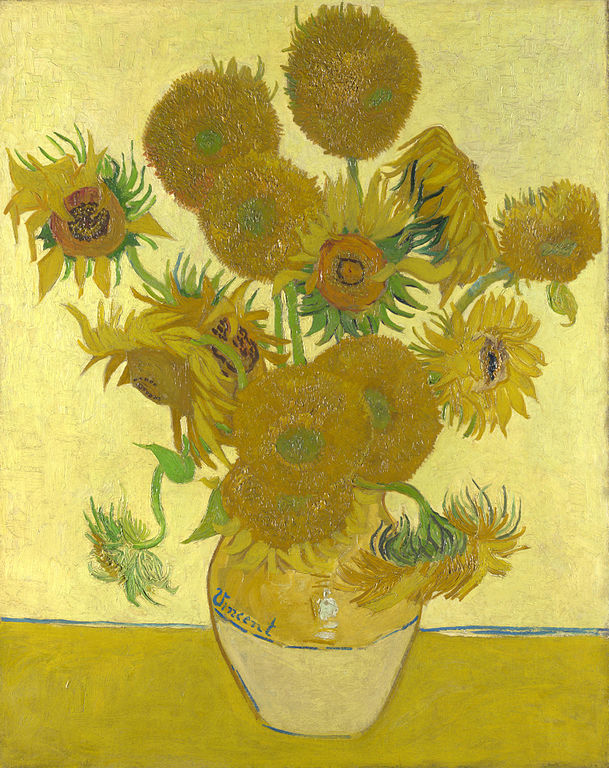
Name: Sunflowers
Artist: Vincent Van Gogh
Date Painted: 1888
Period: Post-Impressionism
Dimensions: 92.2cm (h) x 73 cm (w)
Medium / Material: Oil on Canvas
Current Location: National Gallery, London
Introduction to Sunflowers
Vincent van Gogh’s “Sunflowers” is a series of paintings created between 1888 and 1889. Among these, the most famous versions are those housed in the Van Gogh Museum in Amsterdam and the National Gallery in London. These works are celebrated for their vibrant color, emotional depth, and the innovative techniques Van Gogh employed. “Sunflowers” are not just floral still lifes; they are rich in symbolism, express deep personal meaning for the artist, and showcase his revolutionary approach to color and brushwork.
Composition and Subject
In each version of “Sunflowers,” Van Gogh chose a simple, yet striking composition. The paintings depict a bouquet of sunflowers in a vase, set against a solid background. The choice of sunflowers, with their bold, yellow blooms, was intentional; for Van Gogh, they symbolized gratitude and were a metaphor for the cycle of life and death, with their ability to follow the sun and their eventual wilting and death.
Color and Technique
Van Gogh’s use of color in the “Sunflowers” series is remarkable. He employed shades of yellow to convey the vibrancy and warmth of the flowers, using contrasting colors sparingly to enhance the luminosity of the yellows. This focus on a single color spectrum was revolutionary and demonstrated Van Gogh’s deep understanding of color theory and its emotional impact. His technique, characterized by thick, impasto brushstrokes, added texture and movement to the composition, making the flowers seem alive and dynamic.
Emotional and Symbolic Significance
For Van Gogh, the “Sunflowers” series was not just an exercise in still life painting; it was imbued with personal and symbolic meanings. The paintings were created during a period of high hope and deep despair in his life, particularly around his time in Arles, France. Van Gogh saw the sunflowers as symbols of happiness and friendship, and he intended these paintings as a gesture of friendship and respect towards Paul Gauguin, whom he admired greatly.
Innovation and Influence
Van Gogh’s approach to the “Sunflowers” series was innovative in several ways. He pushed the boundaries of color, using it to convey emotion and mood rather than simply to describe the natural world. His expressive, almost tactile brushwork added a new dimension to still life painting, influencing the development of modern art. The “Sunflowers” series is often cited as a precursor to Expressionism, showcasing Van Gogh’s ability to express his inner world through his choice of subject matter, color, and technique.
Legacy
Today, Van Gogh’s “Sunflowers” are among the most recognized and beloved works of art globally. They continue to captivate audiences with their beauty, complexity, and emotional depth. These paintings exemplify Van Gogh’s genius, his innovative spirit, and his profound influence on the course of art history. They are a testament to his struggle with mental illness and his relentless pursuit of beauty and meaning through his art, making the “Sunflowers” series a powerful symbol of hope and resilience.